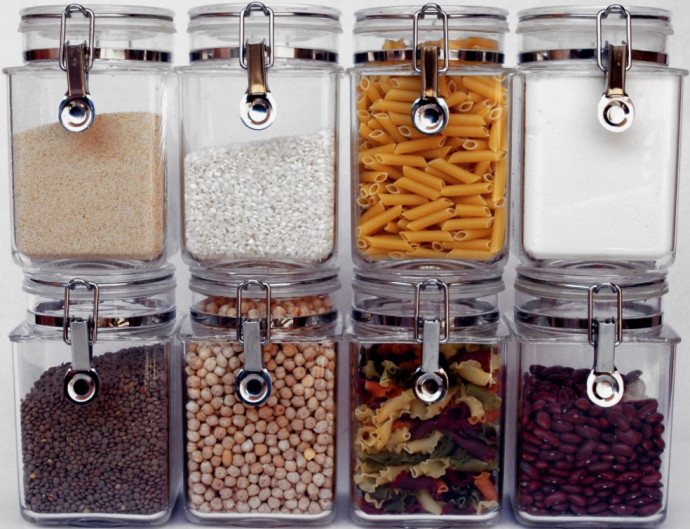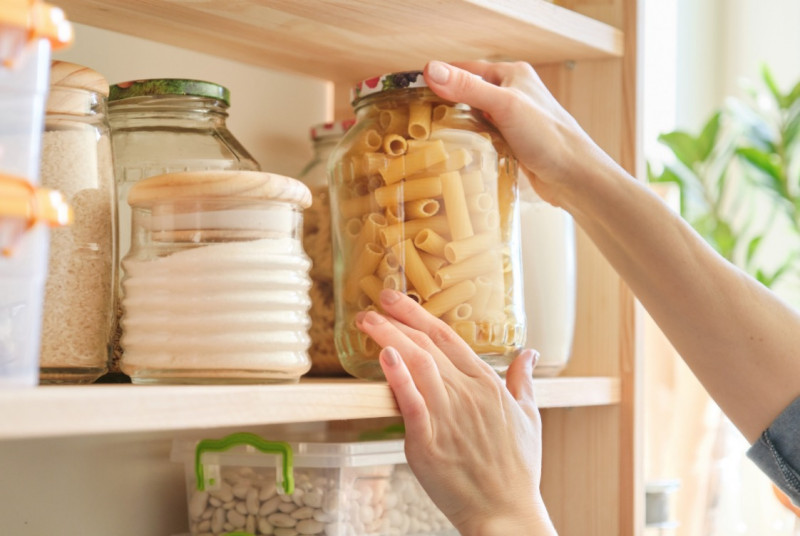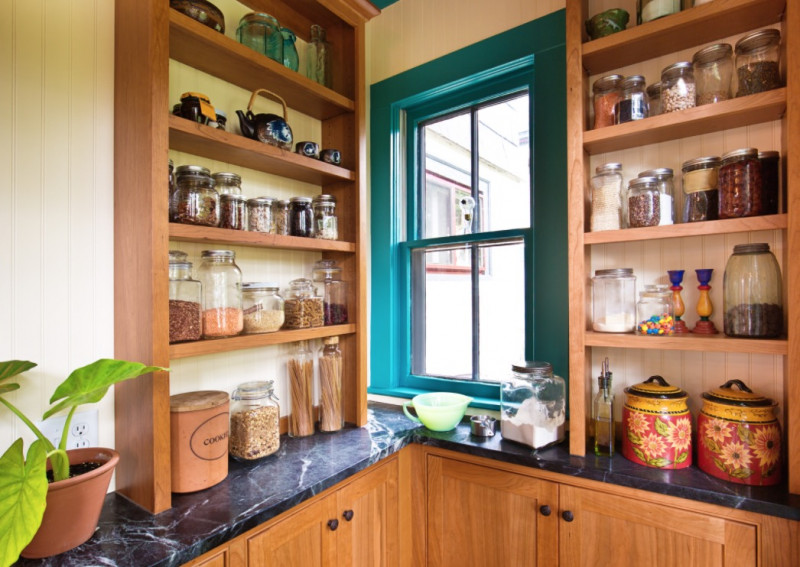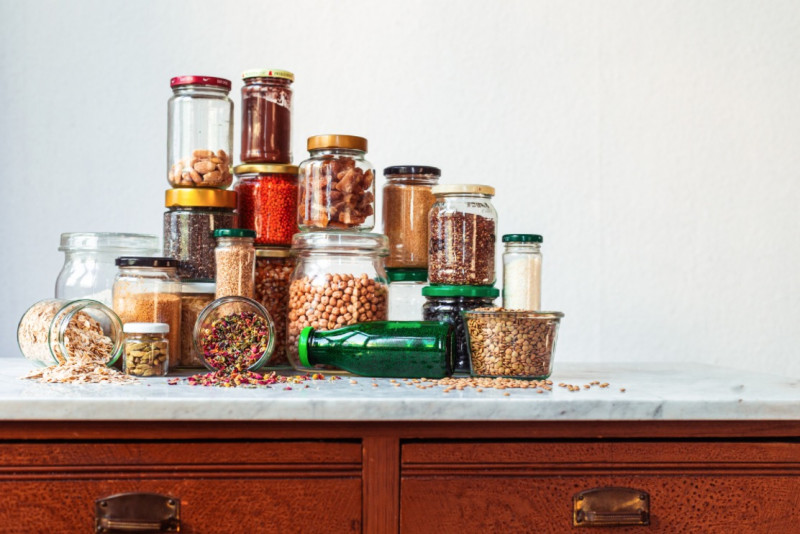Organizing Your Pantry: 7 Best Principles

The pantry is one spot in the kitchen that can get out of control, with boxes and cans tipping over and the one thing you desperately need hiding in the far corners. If you want to get a handle on your pantry, you need to not only sort and separate, but also keep track of it so chaos does not take over again.
Take a good look at your pantry. Are you using all of the space? Can you reach each space comfortably? Do you have sturdy shelving? Wire shelving is best for pantries, but wooden shelving will also work. Be sure to wipe down your shelves before you start putting things away. There are many great techniques you can use to keep your pantry in order. Discover some of the best pantry principles.

1. Organize by Most-Used
Cluster pantry items in the order you use them. The most commonly used ingredients should go in the front and at eye level so there’s no noodling around when you need to locate something quickly. Store the gourmet (and rarely used) items, like mulling spices and edible decorating confetti you only use for special entertaining or holiday baking, in the back or on top shelves.
Gather up small, loose items and keep them in boxes or baskets or on the door in narrow, plastic, catchall file holders, so you know where they are.
2. Try Meal Packages
Another storage concept you might want to try out is meal packages. You store everything you need to make a meal or specific dish together, so you simply grab what you need from one spot. So you could keep spaghetti noodles and spaghetti sauce together. Or elbow macaroni, tuna fish, and cream of mushroom soup in one spot (for tuna noodle casserole). This arrangement can be a lifesaver on a busy night when you don’t have the time or energy to figure out what you have that you can put together into a meal. It’s also very useful when you are leaving dinner instructions for someone else.
3. Tip Top
The highest shelves in a pantry are hard to use. This is the place for those rarely used items. Divide the items you’re keeping up there into categories and place each category in a storage box. That way you can just bring down the whole box, which is much easier than trying to reach and feel around for the one item you need. You’ll always know where that cookie press is or how to find the bamboo skewers.

4. Pantry Plus
Most people simply do not have room in their kitchens to store lots of extras. If you are a bulk or sale shopper (or would like to be!), you need to create an alternate pantry to store the large quantities you’re bringing home to save money. The basement is the first place to look. Pick up an inexpensive plastic shelving unit and use it for all your duplicate items. A guest room closet is another great place to set up some shelving. The garage is not a great place because of the temperature variations. This backup pantry is also a great place to keep those cooking tools and appliances you use once a year.
5. Tally It
Keep a list on a clipboard inside your pantry of everything in the pantry. When you use something, cross it off this list. When you bring things home, add them to the list. This allows you always to know what you have, so you aren’t digging around saying, “I think I have a jar of peanut butter in here somewhere!” Another really fun idea is to paint the back of the pantry door with chalkboard paint (which now comes in many colors) or dry erase paint and write your list there in chalk or erasable marker. Erase items as you use them. Consult your list when making out your grocery shopping list each week.
6. Coffee and Other Beverages
Coffee beans and grounds last longer in the freezer, so don’t keep them in your pantry. Tea bags and loose teas can be a pantry challenge. If you have a large assortment of teas, purchase a clear plastic tea-storage box that allows you to separate the individual tea packets (taken out of the boxes) into sections and clearly see what you have. Cocoa mixes that come in tubs store well in their original containers. If you’re buying individual packets of cocoa or drink mixes like Kool-Aid, they can be organized in a plastic box or zip-top bag. You can also clip them together with a chip clip.

7. Snack Zone
Snack time! The specific types of crackers, cookies, snacks, and cereals you stock is a matter of personal taste, but no matter what you buy, you probably encounter common storage woes for these items.
You can buy a plastic storage box meant for a sleeve of crackers, but the problem is that if you have half or fewer left, there’s more air in the box than crackers and they will get stale. The better choice is to store an opened sleeve of crackers or cookies in a zip-top bag (from which you can remove all air), then place the food back in its original box.
For cereal, store in a plastic or glass container. This not only keeps it fresh, but allows you to see exactly how much is left (no more grabbing a box only to find just crumbs inside). If you have individual packets of oatmeal and other instant cereals, store them standing up in a plastic or metal storage container or basket.
Snack foods that come in bags are best left in bags and secured with a chip clip. Snacks such as granola bars and fruit bars can be stored in a plastic bin. You can also take those big bags of snacks and divide them up into individual portions in sandwich or snack-size zip-top bags. This makes it easier to grab and go and also helps you know exactly how much you have left (who knows what’s lingering in that big snack bag; it could be a handful or a big bowlful). Keep nuts in the tubs or jars they come in for best results.
